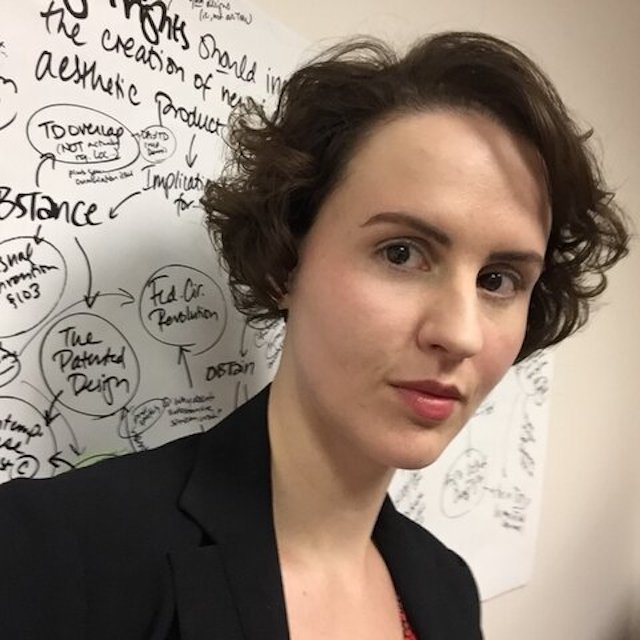Persons having ordinary skill in the art (PHOSITAs) play a number of important roles in patent law. The validity of a patent may, for instance, depend on whether PHOSITAs would likely have developed the claimed invention. A PHOSITA is a hypothetical person, like the “reasonable person” in torts. But are they also (effectively) White? If so, what does that mean for our patent system? These aren’t entirely new questions, as past articles (including these) have at least raised the issue. Goodman and Patterson enrich this literature with two case studies involving patent applications for useful inventions related to Black hair care. They show how cultural gaps between Black inventors and (mostly White) patent attorneys and patent examiners can create significant hurdles to effective patent protection.
This is mainly due to how patent protection is obtained. Unlike a copyright, which arises automatically when the conditions of the Copyright Act are satisfied, a patent must be granted by the U.S. Patent & Trademark Office (USPTO). To obtain a patent, an inventor or their assignee must submit an application which is then substantively examined by a person with technical skill in the relevant area. The process is complex enough that applicants generally seek the services of a patent attorney or agent to help them draft and prosecute the application.
Most patent attorneys and agents are White, as are most patent examiners. Thus, in practice, the PHOSITA on whose judgment patentability depends effectively ends up being a White person of skill. This might not matter (or matter too much) when drafting and evaluating certain types of patent claims. But, as Goodman and Patterson show here, it can create critical problems for certain inventions, such as those relating to Black hair care.
One case study examines two Black inventors’ experience in obtaining a patent for a new and innovative hair sculpting tool. As Goodman and Patterson explain:
The hair sculpting device is colloquially referred to as a hair sponge, and has a handle portion attached to a pliable portion (sponge) with bores spaced and sized to shape and style hair. Their hair sponge created a twisted hair style within minutes when the hand-twisting method took hours. This could be used for children and adults who did not have the time, money, or patience for a hand-twisted style, and was versatile enough to work for those with short hair and long hair.
Based on this description, the innovation and value of the invention seem clear. But after reviewing the history of the examination, Goodman and Patterson suggest neither the attorney who drafted the application nor the examiner who evaluated it understood the innovation or appreciated its value. The authors show how these understandings (or misunderstandings) could have materially affected the prosecution process, resulting in a patent that may have been narrower (and thus less valuable) than what the inventors may have been entitled to.
In a second case study, Goodman and Patterson examine a reverse situation: A patent prosecuted by a pro se inventor. This inventor understood the culture and the value of the invention, but lacked formal education in the law and experience in patent administrative processes to obtain the optimal patent. Even though the inventor obtained a patent, it was likely narrower than it might have been had the patent examiner had a broader cultural perspective on this type of innovation.
So what to do? Goodman and Patterson “propose amending elements of the patent system to reduce the cultural capital gaps between practitioners, examiners, and clients. This includes amending intake processes, advancing USPTO search tools, and improving access to competent pro bono services and pro se support.” They further suggest the USPTO “explore employing a set of anthropologists or sociologists” to work on these issues. They also suggest various ways that law schools could help prepare culturally competent attorneys.
In particular, Goodman and Patterson suggest that the (mostly White and mostly male) people who are currently allowed to prosecute patent prosecutions—i.e., those with scientific or technical educations—need more cultural education. Another idea is to open the doors to the patent bar to more people who already have the relevant cultural knowledge.
The USPTO has long required that all patent practitioners have scientific or technical backgrounds. But is that really the most relevant type of expertise for all inventions? Goodman and Patterson note that “[t]he cultural capital necessary for [understanding and evaluating] Black hair care inventions” includes “including knowledge of Black hair texture and style, perceived monetary value of the Black hair care industry, and existing product expertise.” The inventions discussed in this article—while certainly innovative and valuable—do not seem so technologically complex that they would require a degree in engineering to prosecute.
There is now precedent for opening up the patent bar to people with specifically relevant knowledge. In November, the USPTO announced that it was creating a system of limited admission to allow people with art & design backgrounds to prosecute design patents.
So what if, in addition to trying to make sure people who currently qualify to be registered patent practitioners (i.e., those with certain technical educations or experiences) get more cultural education, we allowed more people with the relevant cultural education and experiences to become registered patent practitioners? Perhaps inventors like the ones featured in this article would be better served if the patent bar were opened up to allow people with this type of cultural knowledge to prosecute (and thus develop expertise in prosecuting) patent applications. In this way, Goodman and Patterson’s article also adds to the important work done by others (such as Will Hubbard and Mary Hannon) in challenging the patent-bar eligibility status quo.








